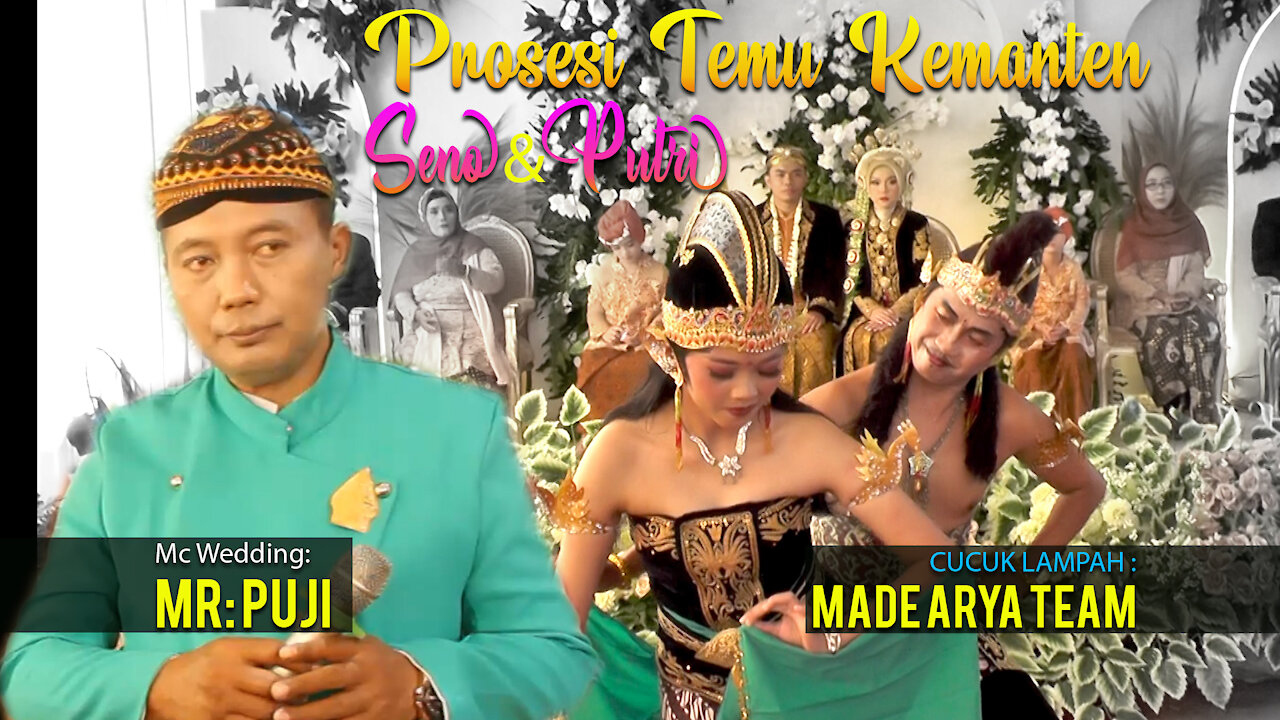Premium Only Content

JAVA TRADITIONAL PROCESSES MEET MANTEN (SENO & PUTRI) VERSION RAMA & SHINTA
JAVA TRADITIONAL PROCESSES MEET MANTEN (SENO & PUTRI) VERSION RAMA & SHINTA
JAVA TRADITIONAL PROCESSES MEET MANTEN (SENO & PUTRI) VERSION RAMA & SHINTA
JAVA TRADITIONAL PROCESSES MEET MANTEN (SENO & PUTRI) VERSION RAMA & SHINTA
The Meaning and Philosophy of Javanese Traditional Wedding Traditions that You Need to Know
– Marriage is a sacred and solemn activity. The various series of activities, prayers and philosophies are full of meaning.
Indonesia has hundreds or even thousands of wedding traditions with various rituals, meanings and philosophical values behind them. One of the most famous traditional weddings in Indonesia is the Javanese traditional wedding because it has the largest population in Indonesia.
Javanese traditional weddings are widely known as weddings that have quite a lot of processions. Not infrequently also that in a marriage that uses Javanese customs completely also involves a bride shaman.
The shaman's job is to prepare everything related to the wedding customs. Usually, she also doubles as a bridal make-up. Some things that need to be prepared include ubo rampe, cone, eggs, water for splashing and so on.
Although the implementation of Javanese wedding processions complete with customs is now quite rare, but it is better if we know the steps of the procession.
The Procedure and Identity of the Javanese Kingdom
The course of the Javanese traditional wedding procession also cannot be separated from the warm role of the host or presenter. This program is in charge of guiding as well as accompanying the activities carried out during the procession.
An interesting study conducted by Sukarno (2008), through his dissertation entitled The Study on Interpersonal Meanings in Javanese Wedding 'Pranatacara' Genre, stated that the role of this program was considered very important in Javanese traditional weddings.
The language he uses always uses the smooth Javanese language (kromo inggil), which even the Javanese themselves now don't really understand.
In the study, Sukarno concluded that the function of the procedural was aimed at ensuring that all activities during the wedding procession were under his control. In addition, the important role of the event organizer is to function to build warmer interpersonal communication with the guests present.
In practice, this procedure seems to condition an aura full of aristocracy, as is the formal image that became the official identity of the Javanese royal families in the past. The sound of this program is usually accompanied by traditional Javanese music (gamelan).
Series of Javanese Traditional Wedding Traditions
The following are some of the common processions that occur at weddings using Javanese customs which we have summarized from various sources.
1. Submission or Application
Surrender or proposal is the first stage of Javanese marriage. At this stage, the groom and his family come to the bride's residence with offerings.
The contents of these offerings are varied, ranging from a set of prayer utensils, rings to traditional food.
In wedding customs in East Java, for example, the traditional food that must be brought at the proposal ceremony is jadah cake, be it white jadah, red jadah (from brown rice) or yellow jadah. Jadah, or other snacks made from glutinous rice, has a philosophy of prayer so that the bride and groom will continue to stick together.
In this application, there is usually a meeting about marriage technicalities. Starting from the date of the ceremony to the intricacies of the reception.
2. Siraman
Siraman is the next procession in Javanese traditional wedding. Launching Popbela.com (13/06/2020), this ceremony aims to cleanse the bride and groom before the marriage contract takes place.
In its implementation, the bride and groom will be bathed by seven people, namely the parents of the bride and groom, pinisepuh (the elder or the representative) and the mother of the prospective bride.
The equipment and equipment needed for this ceremony are various, one of which is a special jug containing water from 7 springs. To prepare all these needs, it is actually the duty of a bride shaman.
But not infrequently now wedding organizers who provide a complete package of weddings. Starting from the beginning of the offering to the time of the wedding ceremony, everything has been prepared by the wedding service provider.
3. Paes or Screaming
Paes is the next stage of Javanese traditional marriage. Right after the siraman, the bride, the mother of the bride accompanied by other mothers (the elders), is dressed in the bride's room (or special room).
Usually in Javanese traditional weddings, the fine hairs on the bride's face are scraped so that the bride's face looks more shiny. This process is also known as the creaking stage.
-
 9:39
9:39
MattMorseTV
2 hours ago $0.02 earnedVance just DROPPED a BOMBSHELL.
3.06K21 -
 1:47:49
1:47:49
Jeff Ahern
3 hours ago $0.23 earnedThe Sunday Show!
111K4 -
 LIVE
LIVE
Spartan
1 hour agoExpedition 33, Halo Later on (Maybe)
89 watching -
 LIVE
LIVE
Meisters of Madness
59 minutes agoFinals and Wuchang!
68 watching -
 LIVE
LIVE
Lofi Girl
2 years agoSynthwave Radio 🌌 - beats to chill/game to
267 watching -
 LIVE
LIVE
BBQPenguin_
2 hours agoTasking & PVP
46 watching -
 LIVE
LIVE
FrizzleMcDizzle
3 hours agoGladius, Creature of the Night - NEW NIGHTLORD - NightReign
47 watching -
 8:31
8:31
MattMorseTV
1 day ago $1.61 earnedTexas just did the IMPOSSIBLE.
70.3K91 -
 5:02:13
5:02:13
Rotella Games
19 hours agoGreen Hell Day 6 | We Have a LONG Way to Go
20.2K4 -
 41:26
41:26
The Mel K Show
6 hours agoMel K & Clay Clark | Financial Success Hides Behind Self Discipline: Five Pillars | 8-24-25
40.4K4